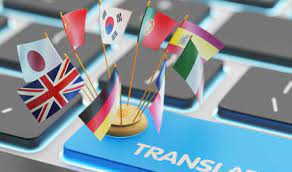
Why a Voice Over Translation Service is Necessary

Voice over translation services have become an important part of marketing for many businesses. Those in the media and entertainment world have embraced voice-over translation for years and have their revenue soaring because of this. With video marketing now taking the lead globally, more businesses are gravitating toward voice-over translation services. New businesses who aren’t yet taking advantage of this marketing and communication channel often wonder whether it is necessary and why they should be investing in voiceovers. The answer is quite simple – reach. Voiceovers are not just for marketing reasons. The service significantly reduces the cost of shooting new videos for employee training, interactive eLearning, and product demonstrations. There are a lot of other advantages associated with voice-over translation services. Read on to find out more.
Why Voice Over Translation Service is Essential
Businesses and brands who wish to make localized content for learning purposes know the advantages of voice-over translation services. Whether for eLearning content or marketing videos, voice-over translation can add that professional touch as the video crosses into the international space. Training materials available in one language, especially for international brands, appeal to only a set of the employee force and make the other non-language speakers feel neglected. Employers who wish to simplify communication and effectively pass on messages across the board can consider voice-over translations to ensure that all of their employees are familiar with the context of the message being passed across. With voice-over translations, employees also have a better chance of understanding their roles and duties.
Why Voice Over Translation is Rated Above Other Translation Services
Voice over translations appear easier than they really are. Most people consider the vocal part of the entire process and consider it to be a lot easier. However, contrary to that belief, it can be a hard task to pull off. First, the content of the video or media file has to be translated to pass on the same message and in the same context as the original document. Secondly, the voice-over is done such that it mirrors the tone of the original speaker in passing the message across. Also, the voice-over translation expert has to ensure that a frame-by-frame playback of the voice-over is achieved such that demonstrations and gesticulations aren’t out of place. Achieving these while also keeping up with on-screen translation speed can be a relatively hard task to pull off.
Voice over translations for training materials and instructional videos are a lot complex to handle. However, it is the best approach to passing on information without the viewer losing out on important on-screen details. With subtitles, viewers have to alternate their attention between the video content and the on-screen translation; however, voice-over translations can focus on the instructor while getting the information needed.
Types of Voice Over Translations
When looking for voice-over translation services, there are a few different things that you should be aiming for. Choosing the right type of voice-over translation service will significantly boost your experience and improve the quality of your communication. Below are some of the important types of voice-over translation services you should be aware of.
Voice Replacement- This involves removing the original sound in the media file and replacement with a voice-over in the desired language. This is mostly what many companies want when looking for a voice-over translation service. This can be done by muting the original speaker’s audio and overlaying it with new audio in the new language. The difficulty with this method is trying to match the speed and tone of the original speaker, especially as they emphasize certain points.
UN-Style Voice Over- This type of voiceover is popular, and it involves a mix of both the original speaker’s audio and the overlaid translated voiceover. This method does not replace the voice of the original speaker. However, the voiceover is made such that it is louder than the original speaker’s voice.
Off-Screen Voice Over- eLearning courses often use this as an added resource. The viewer can follow the off-screen voiceover while also matching it with on-screen animation and texts. This is a good idea when the video is not visible, and the translation requires production.
LipSynching/Dubbing-This is perhaps the commonest and most recognizable of all voice-over types. This service is mostly used in movies that are being made available to an international audience. This ice-over or dubbing solution requires professional expertise and can be incredibly difficult, especially as the voice-over artist has to carry on the same emotions and tone as the original actor.